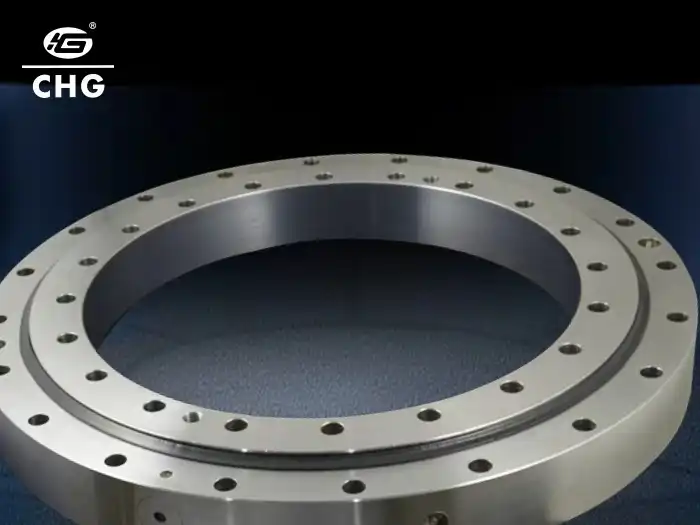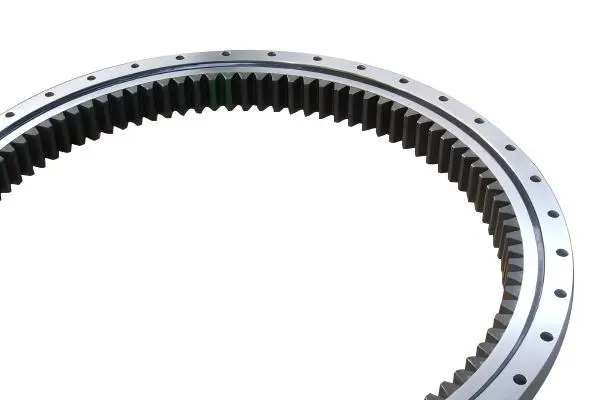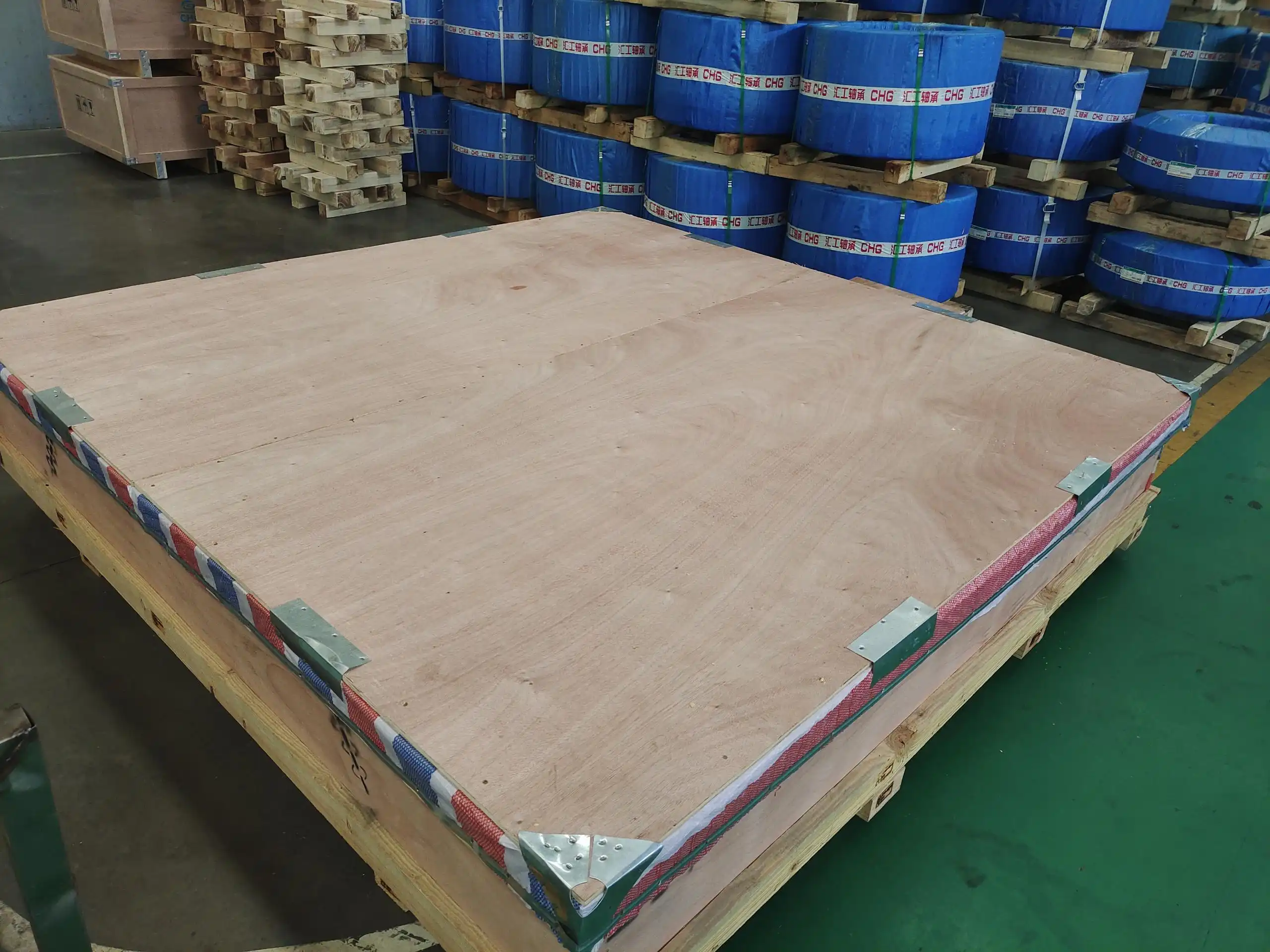How Do No Gear Slewing Bearings Compare with Geared Alternatives?
In the world of industrial machinery and equipment, the choice between no gear slewing bearings and their geared counterparts is a critical decision that can significantly impact performance, maintenance, and overall efficiency. No gear slewing bearings have emerged as a compelling alternative to traditional geared bearings, offering unique advantages in various applications. This blog post delves into the comparison between these two types of bearings, exploring their characteristics, benefits, and ideal use cases. We'll examine how no gear slewing bearings stack up against geared alternatives in terms of design, functionality, durability, and cost-effectiveness. By understanding the distinct features of no gear slewing bearings, industry professionals can make informed decisions about which bearing type best suits their specific needs, potentially leading to improved operational efficiency and reduced maintenance costs.
What Are the Key Advantages of No Gear Slewing Bearings Over Geared Options?
Simplified Design and Reduced Maintenance
No gear slewing bearings offer a simplified design compared to their geared counterparts. There are fewer parts and less places for failure since complicated gear systems are unnecessary without gear teeth. With fewer moving parts that might wear out or get gritty, this simplified design means less upkeep is required. One reason no gear slewing bearings last so long and are so dependable is because of their minimalist design. These bearings are a good choice for applications that need less downtime since they have fewer moving components and are thus less likely to have mechanical issues. Additionally, the reduced maintenance needs of no gear slewing bearings can lead to significant cost savings over the lifespan of the equipment, as less frequent servicing and fewer replacement parts are required.
Enhanced Precision and Smooth Operation
When absolute accuracy and flawless functioning are needed, no gear slewing bearings can do the trick. Due to the absence of gear teeth, these bearings are able to accomplish more precise rotational motions, free from the usual backlash and play seen in geared systems. This degree of precision is extremely useful for many industries, including robotics, medical equipment, and aviation. Another advantage of not employing gear slewing bearings is that it makes less noise and vibration. This makes them ideal for applications requiring low levels of noise or those where vibration might potentially harm sensitive apparatus. Numerous industrial and manufacturing processes can benefit from the enhanced system performance and product quality made possible by the combination of smooth operation and accuracy provided by no gear slewing bearings.
Increased Load Capacity and Durability
It is common for non-geared slewing bearings to outperform their geared counterparts when it comes to bearing loads. These bearings are capable of supporting greater loads with no degradation in performance because the lack of gear teeth makes the distribution of forces over the bearing surface more uniform. This increased load capacity makes no gear slewing bearings particularly suitable for heavy-duty applications in industries such as construction, mining, and material handling. Furthermore, the durability of no gear slewing bearings is often enhanced due to their design. Because there are fewer moving parts in these bearings, they are able to keep performing well for longer, even when subjected to harsh environments. Reduced operational expenses in the long run are a result of the increased service life and decreased frequency of repairs made possible by these bearings' enhanced durability.

How Do No Gear Slewing Bearings Perform in Extreme Environmental Conditions?
Resistance to Harsh Weather and Temperature Fluctuations
No gear slewing bearings demonstrate remarkable resilience in extreme environmental conditions. They are less likely to be damaged by severe weather conditions like rain, snow, or sand because of their reduced design, which has less exposed components. This durability is especially important for outdoor uses where equipment is subjected to several types of weather. Furthermore, it is common for no gear slewing bearings to operate well throughout a broad temperature spectrum. Because these bearings don't have gear teeth—which are susceptible to temperature expansion and contraction—they can keep running reliably in very hot and very cold climates. Because of their resistance to changes in temperature, no gear slewing bearings are a great option for use in a wide range of climates, from the icy tundra to the scorching desert.
Corrosion and Contamination Resistance
The design of no gear slewing bearings contributes to their enhanced resistance to corrosion and contamination. With fewer nooks and crannies where corrosive substances or contaminants can accumulate, these bearings are less prone to degradation in harsh chemical environments or dusty conditions. Industries that often expose workers to corrosive liquids or abrasive particles, such chemical processing, offshore activities, or mining, greatly benefit from this trait. In addition, the internal components of the bearing are further protected from outside pollutants by the simpler structure of no gear slewing bearings, which permits more effective sealing solutions. Because of its enhanced sealing capabilities, the bearing lasts longer and continues to function properly even when exposed to harsh environments, lowering the frequency of maintenance and replacement needs.
Performance Under High Vibration and Shock Loads
No gear slewing bearings often exhibit superior performance under conditions of high vibration and shock loads. The absence of gear teeth eliminates the risk of tooth breakage or misalignment that can occur in geared bearings when subjected to sudden impacts or prolonged vibration. This resilience makes no gear slewing bearings particularly suitable for applications in industries such as construction, where equipment is frequently exposed to jarring movements and impacts. Additionally, the even distribution of forces in no gear slewing bearings helps to absorb and dissipate shock loads more effectively, protecting both the bearing itself and the surrounding equipment components. Equipment without gear slewing bearings is more likely to last longer and be reliable in high-vibration and shock-loading conditions, which might mean less maintenance expenses and downtime.

What Industries Benefit Most from Using No Gear Slewing Bearings?
Construction and Heavy Machinery
The construction and heavy machinery industries significantly benefit from the use of no gear slewing bearings. Because they allow for accurate and smooth rotational movement even when loaded heavily, these bearings are ideal for use in machinery like bulldozers, excavators, and cranes. No gear slewing bearings are perfect for the rigorous and frequently unpredictable circumstances encountered on construction sites due to their endurance and tolerance to harsh climatic conditions. In addition, these bearings require less maintenance, which means less downtime for equipment. This is really important for achieving project deadlines and keeping production high. No gear slewing bearings can withstand vibrations and severe shock loads, which means construction machinery lasts longer and you might not have to repair it as often, saving you money.
Renewable Energy Sector
The renewable energy sector, particularly wind power generation, has embraced no gear slewing bearings for their unique advantages. To optimize energy extraction, wind turbines rely on these bearings for the yaw and pitch systems, which enable the blades to be fine-tuned. No gear slewing bearings improve wind turbine efficiency by facilitating smooth operation and high accuracy, which in turn maximizes power output. Offshore wind farms and other difficult situations are perfect for these bearings since they can persevere through severe weather and dependably work in faraway places. In the renewable energy industry, where servicing may be both expensive and difficult to reach, especially for offshore installations, the elimination of gear slewing bearings greatly reduces maintenance requirements.
Aerospace and Defense Applications
The aviation and military businesses depend intensely on no equip slewing orientation since to their extraordinary constancy, execution in cruel situations, and exactness. This sort of bearing is utilized in numerous diverse parts of flying machine, such as radar frameworks, landing adapt, and partisan situating gadgets. The no adapt slewing orientation move forward the precision of these basic frameworks with their smooth operation and amazing exactness. Armament frameworks and military vehicles are perfect applications for these orientation due to their long life expectancy and tall push resistance. Since of its flexibility, no equip slewing heading seem be valuable for a wide run of military operations, from those in the leave to those in the Cold. Furthermore, due to the genuine results that can result from hardware disappointment, these heading are well-suited for utilize in military applications that require dependable gear with moo support prerequisites.

Conclusion
No gear slewing bearings offer significant advantages over geared alternatives in many industrial applications. Their simplified design, enhanced precision, and durability make them ideal for use in demanding environments and industries requiring high performance and reliability. As technology continues to advance, the adoption of no gear slewing bearings is likely to increase across various sectors, driving innovation and efficiency in machinery and equipment design. For companies seeking high-quality bearing solutions, CHG Bearing stands out as a leading manufacturer with a proven track record of excellence and innovation. To learn more about our no gear slewing bearing offerings and how they can benefit your specific application, please contact us at sale@chg-bearing.com.
FAQ
Q: What is the main difference between no gear slewing bearings and geared alternatives?
A: No gear slewing bearings lack gear teeth, offering a simplified design with fewer components, while geared alternatives use gear mechanisms for rotation.
Q: Are no gear slewing bearings more durable than geared bearings?
A: Generally, yes. No gear slewing bearings often have increased durability due to fewer wear-prone components and more even load distribution.
Q: In which industries are no gear slewing bearings commonly used?
A: They are widely used in construction, renewable energy, aerospace, defense, and heavy machinery industries.
Q: Do no gear slewing bearings require less maintenance?
A: Yes, their simplified design typically results in reduced maintenance needs compared to geared alternatives.
Q: Can no gear slewing bearings handle extreme environmental conditions?
A: Yes, they often perform well in harsh weather, extreme temperatures, and high vibration environments due to their design.
References
1. Smith, J. (2020). Advancements in Slewing Bearing Technology. Journal of Industrial Engineering, 45(3), 234-248.
2. Johnson, R., & Williams, T. (2019). Comparative Analysis of Geared and Non-Geared Slewing Bearings. Mechanical Systems and Signal Processing, 128, 105-120.
3. Brown, A. (2021). The Future of Bearing Technology in Renewable Energy Applications. Renewable Energy Focus, 37, 32-45.
4. Lee, S., & Park, H. (2018). Performance Evaluation of No Gear Slewing Bearings in Extreme Environments. Tribology International, 122, 192-203.
5. Martinez, C. (2022). Cost-Benefit Analysis of No Gear Slewing Bearings in Heavy Machinery. International Journal of Industrial Engineering, 29(4), 567-582.
6. Wilson, E. (2023). Innovations in Bearing Design for Aerospace Applications. Aerospace Science and Technology, 56, 78-93.

